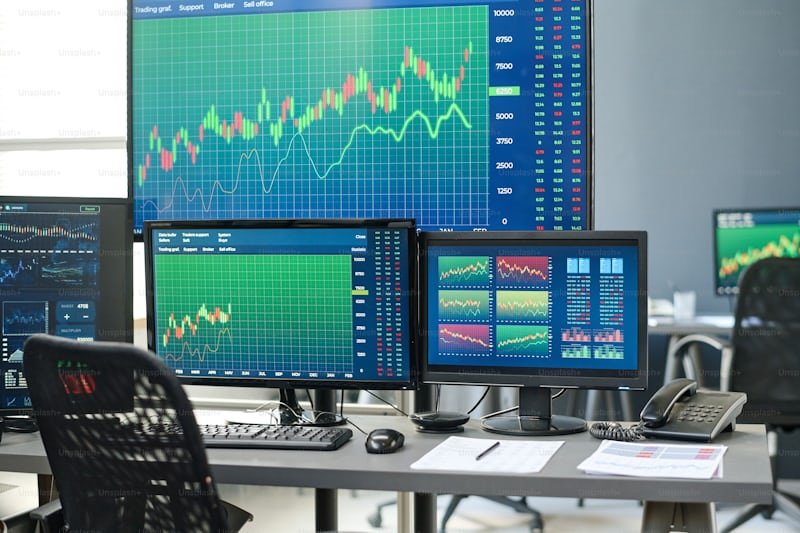In today’s rapidly paced world, we heavily rely on portable electronic gadgets to stay connected, informed, and entertained. One of our biggest challenges, though, is ensuring that our devices have enough battery life to survive the full day. The idea of mAh is applicable in this situation. This term has certainly been used a lot, but what does it mean exactly? We will go in-depth on mAh in this blog, covering topics like its significance and many others. Without further ado, let’s understand about mAh.
What Is mAh (Milliamp Hour)?
The term “mAh” stands for “milliampere hour” and is a unit for measuring (electric) power over time. The symbols mA⋅h, mA h, or simply mAh can all be used to represent milliampere hour. It is commonly utilized to measure a battery’s energy capacity. Generally, the higher the mAh and the greater the battery capacity or life. A higher number indicates that the battery can store more energy and so has a higher capacity. This also signifies that it may have a greater battery life for a particular given use.
The milliampere-hour is a small unit of measurement that equals one-thousandth of an ampere-hour (Ah). Thus, a battery with a 3,000 mAh capacity may supply 3 amps of current for an hour, 1.5 amps for two hours, and so on. Both mAh and Ah measures are frequently used to represent how much energy a battery can hold and how long a device can run before the battery needs to be recharged.
It needs to be noted that mAh is not the only factor that determines battery life. Battery life can also be significantly impacted by other factors, including device type, screen brightness, and usage patterns.
Good Read: Top 10 Best And Most Secure Phone In 2022
What Is The Importance Of mAh?
When choosing any battery-powered device, mAh is the most important thing to consider when making a choice. You need to check the mAh since it will help you know how much power the battery can hold and how long it can run without recharging. You should look at your devices’ power consumption to figure out the proper mAh requirement. For example, you will need to get a solar generator with a higher mAh if you want to use the solar generator battery for larger appliances like refrigerators. This ensures that the solar-powered device can run your devices for several hours.
It’s important to keep in mind that mAh alone cannot fully describe the performance of a solar generator. To make an informed buying selection, you need to consider other factors like the charge controller, inverter, solar panels, and so on.
What Are The Uses Of mAh?
Milliampere hours (mAh) are often used to measure battery capacity, specially in portable electronic devices like smartphones, tablets, and laptop computers. A battery’s capacity, which is typically expressed in milliampere-hours (mAh), indicates how much electric charge it can hold. The more the mAh rating, the longer the battery will last before needing to be recharged. mAh can also be used to measure how much electric charge has been transferred over a specific amount of time, in addition to determining a battery’s capacity. This can be helpful for evaluating the performance of various battery types or figuring out the efficiency of a battery charging system. For understanding and comparing battery performance across a range of applications, the mAh unit of measurement is essential.
mAh VS. Charge Capacity-
The terms mAh and charge capacity are used to define a battery’s capacity, or how much power it can store. Although they both refer to the same thing, their usage is slightly different.
mAh is a common term used to indicate the battery capacity of portable devices like tablets and laptops. It is the unit that represents the amount of energy that a battery can store. Charge capacity, on the other hand, describes the battery capacity in solar storage systems and electric vehicles. It measures how much energy a battery can receive throughout a charging cycle. Typically, it is expressed in kWh or Wh. In short, mAh is used to measure battery capacity and charge capacity to measure energy.
Conversions Of milliampere hours (mAh):
mAh to Wh Conversion:
To convert mAh to Wh, multiply the charge and voltage. The result is then divided by 1000 to obtain a watt-hour.
The formula for converting mAh to Wh is as follows:
E (Wh) = Q (mAh) * V / 1000
Where,
E: energy in watt-hours.
Q : charge in milliamp hours.
V: voltage.
Let’s determine the watt-hour of a battery with a 1000 mAh capacity that works at 120 V.
Energy in watt-hour = 1000 mAh * 120 V / 1000 = 120 Wh.
mAh To Wh Conversion Table-
| Milliamp-hours | Watt-hours | Amps |
| 100 mAh | 12 Wh | 120 V |
| 110 mAh | 13.2 Wh | 120 V |
| 120 mAh | 14.4 Wh | 120 V |
| 130 mAh | 15.6 Wh | 120 V |
| 140 mAh | 16.8 Wh | 120 V |
| 2000 mAh | 240 Wh | 120 V |
| 3000 mAh | 360 Wh | 120 V |
| 4000 mAh | 480 Wh | 120 V |
| 5000 mAh | 600 Wh | 120 V |
mAh To Ah Conversion:
Since they are both used to measure electric charge, mAh and Ah are closely related. One ampere hour is the electric charge carried in one-ampere current in one hour. Amp-hour is a non-SI metric for electric charge and is denoted as amps* hours.
Divide the electric charge by 1000 or the conversion ratio to convert mAh (milliampere-hour) to Ah (ampere-hour).
Ah (amp hour) = milliampere hour ÷ 1000
For instance, if the battery’s mAh is 2000, the Ah will be 2000mAh ÷1000= 2 Ah.
mAh To Ah Conversion Table-
| Milliamp-hour | Amp-hour |
| 1000 mAh | 1 Ah |
| 1100 mAh | 1.1 Ah |
| 1200 mAh | 1.2 Ah |
| 1300 mAh | 1.3 Ah |
| 1400 mAh | 1.4 Ah |
| 1500 mAh | 1.5 Ah |
Conclusion
The mAh in batteries is a measure of capacity. MAH plays a significant role in a battery’s ability to generate energy and estimate its long-term capacity. On the other hand, it also estimated a battery’s ampere-hour based on its lifespan.














